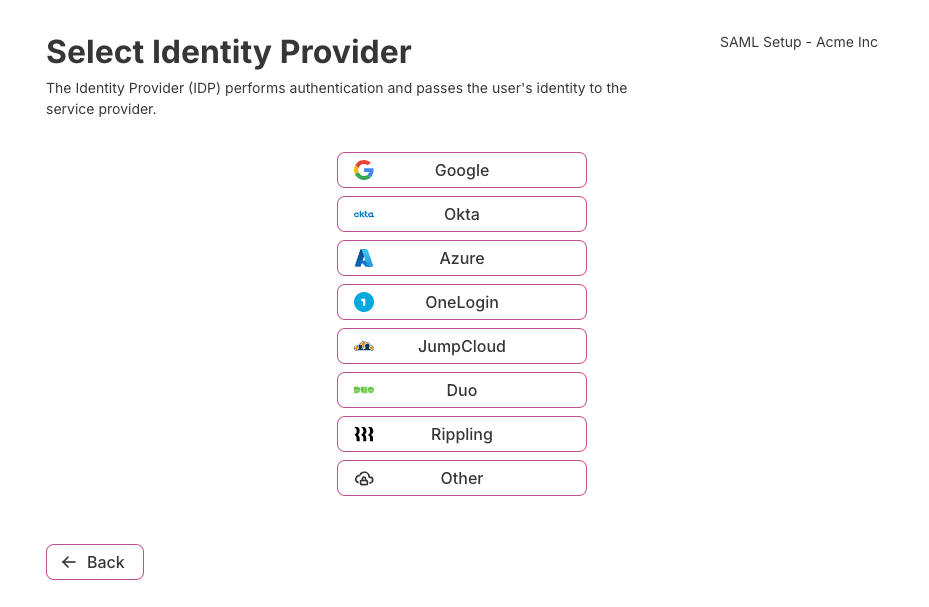Enterprise SSO and SCIM Setup Guide Examples
PropelAuth will provide your users with walkthrough guides for each IdP that we integrate with. This includes Google, Okta, Entra, and more. Each guide provides specific directions for the provider your customer selects, ensuring a smooth integration experience. We also provide Generic guides which includes all the URLs and attributes needed to get your user's Enterprise SSO connection up and running.

If you'd like to preview what's involved in setting up a specific identity provider, the following links walk through each step of the setup process.
SAML Example Guides
OIDC Example Guides
SCIM Example Guides
The above SCIM guides are specific to when SAML is configured. The SCIM guides when OIDC is used are slightly different.
